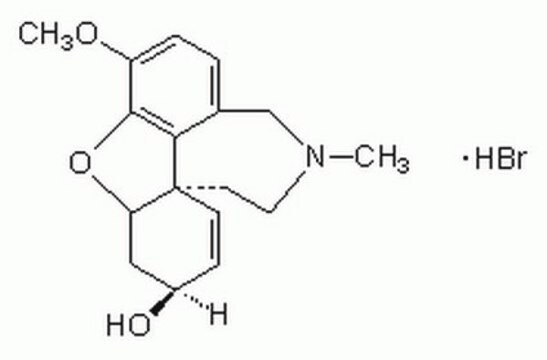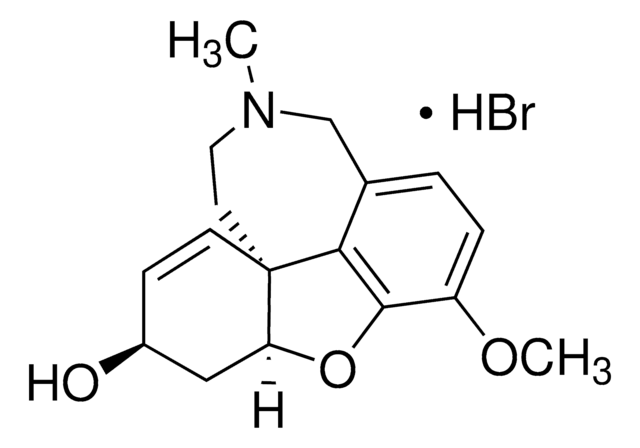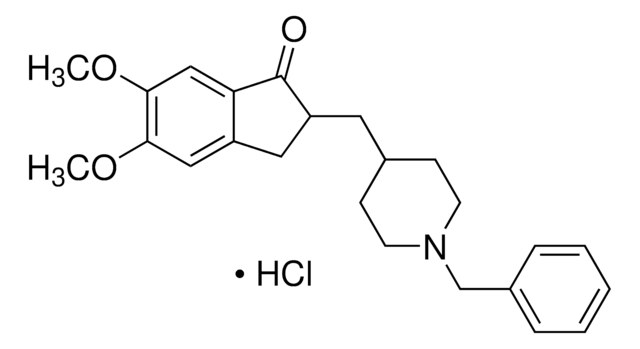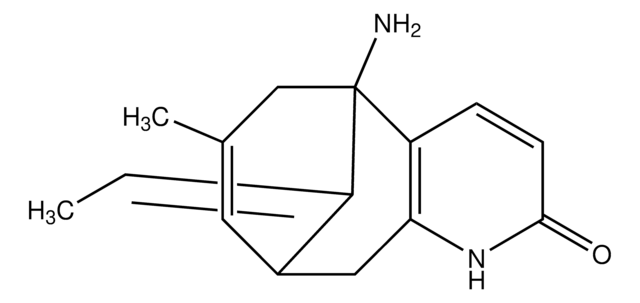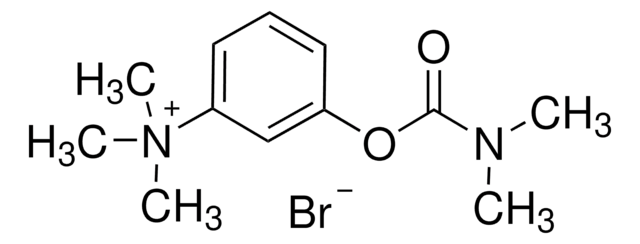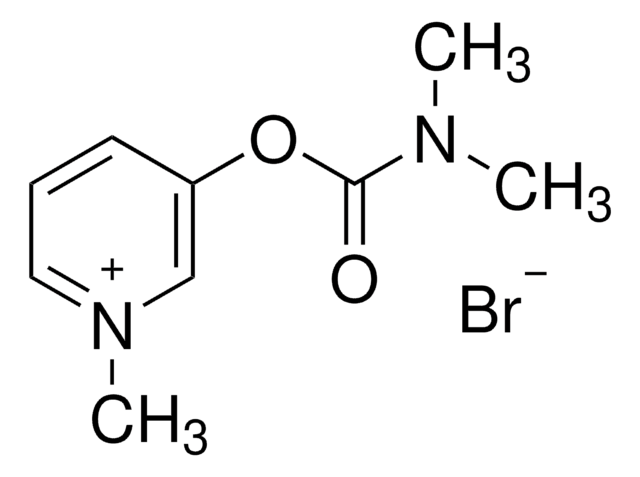Kluczowe dokumenty
G1660
Galanthamine hydrobromide from Lycoris sp.
≥94% (HPLC)
Synonim(y):
Galantamine hydrobromide
About This Item
Polecane produkty
pochodzenie biologiczne
plant (Ungeria victoris)
Poziom jakości
Próba
≥94% (HPLC)
Formularz
powder
mp
270 °C
rozpuszczalność
DMSO: soluble 10 mg/mL, clear, colorless
water: soluble 20 mg/mL, clear, colorless
temp. przechowywania
−20°C
ciąg SMILES
Br[H].COc1ccc2CN(C)CC[C@@]34C=C[C@H](O)C[C@@H]3Oc1c24
InChI
1S/C17H21NO3.BrH/c1-18-8-7-17-6-5-12(19)9-14(17)21-16-13(20-2)4-3-11(10-18)15(16)17;/h3-6,12,14,19H,7-10H2,1-2H3;1H/t12-,14-,17-;/m0./s1
Klucz InChI
QORVDGQLPPAFRS-XPSHAMGMSA-N
informacje o genach
human ... ACHE(43)
Szukasz podobnych produktów? Odwiedź Przewodnik dotyczący porównywania produktów
Opis ogólny
Zastosowanie
- as an AChE (acetylcholinesterase) inhibitor and positive control in acetylcholinesterase assay performed to determine the activity of AChE
- as a positive control in the screening of AChE inhibitors
- as a positive control in AChE inhibitory assay performed to determine the AChE-inhibitory activities of pyrithione and related sulfur-containing pyridine N-oxides
Działania biochem./fizjol.
Opakowanie
Hasło ostrzegawcze
Danger
Zwroty wskazujące rodzaj zagrożenia
Zwroty wskazujące środki ostrożności
Klasyfikacja zagrożeń
Acute Tox. 3 Oral
Kod klasy składowania
6.1C - Combustible acute toxic Cat.3 / toxic compounds or compounds which causing chronic effects
Klasa zagrożenia wodnego (WGK)
WGK 3
Temperatura zapłonu (°F)
Not applicable
Temperatura zapłonu (°C)
Not applicable
Środki ochrony indywidualnej
Eyeshields, Faceshields, Gloves, type P2 (EN 143) respirator cartridges
Wybierz jedną z najnowszych wersji:
Masz już ten produkt?
Dokumenty związane z niedawno zakupionymi produktami zostały zamieszczone w Bibliotece dokumentów.
Klienci oglądali również te produkty
Nasz zespół naukowców ma doświadczenie we wszystkich obszarach badań, w tym w naukach przyrodniczych, materiałoznawstwie, syntezie chemicznej, chromatografii, analityce i wielu innych dziedzinach.
Skontaktuj się z zespołem ds. pomocy technicznej
